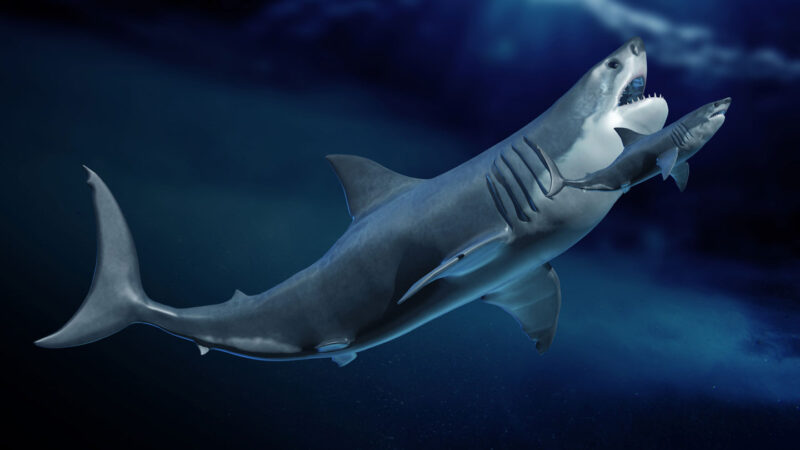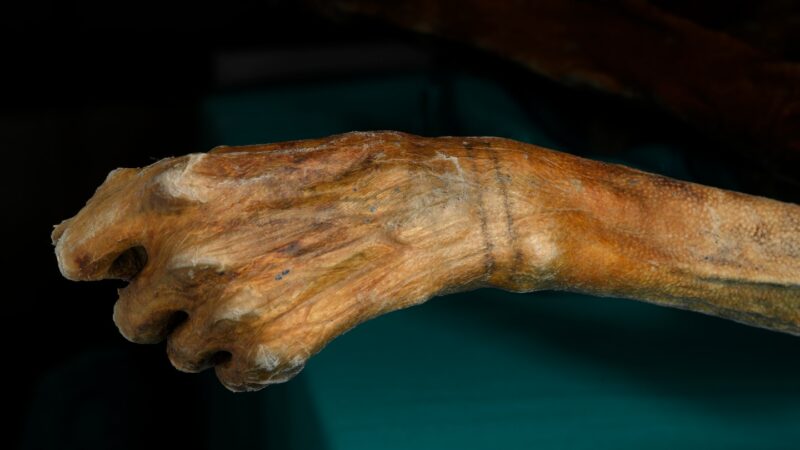Megalodon (noun, “MEH-guh-luh-dawn”)
The megalodon was the largest shark to ever live.
This species’ official name is Otodus megalodon. This fish prowled warm ocean waters around the world starting about 20 million years ago. It went extinct around 3 million years ago — likely due to a cooling of Earth’s climate.
Like all sharks, the megalodon had a skeleton made of cartilage. (That’s the tough but flexible material in your nose and ears.) Cartilage does not preserve as well as bone. So much of what we know about megalodons comes from their teeth. Some details are also known from fossilized megalodon vertebrae. Those pieces of their skeleton are fairly durable due to how much calcium they contain.
These clues tell us that megalodon sharks were likely 15 to 18 meters (50 to 60 feet) long. That’s around 3 times as long as today’s great white sharks — and about as long as a railroad car. Megaladons may have weighed as much as a train car, too.
A megalodon’s jaws were probably about 3 meters (nearly 10 feet) wide and lined with nearly 300 teeth. Those teeth could be almost 20 centimeters (8 inches) long, or about as long as a banana. Megalodons would have used those chompers to chow down on whales, big fish and perhaps even other sharks. And the megalodon could have done this with a bite force at least three times as strong as a T. rex’s.
Some movies imagine what it would be like if megalodons still existed. But these sharks are extinct. Much of the ocean does remain unexplored. But a shark the size of a train car would be hard to overlook.
In a sentence
Baby megalodons may have eaten their own siblings while still in their mother’s womb.





